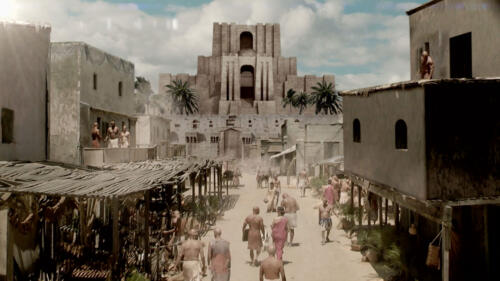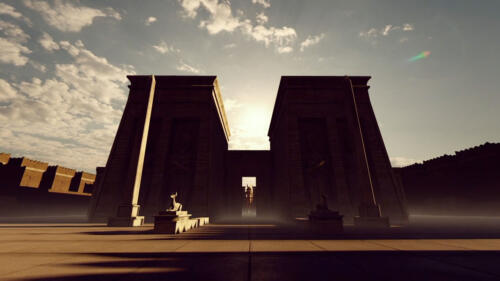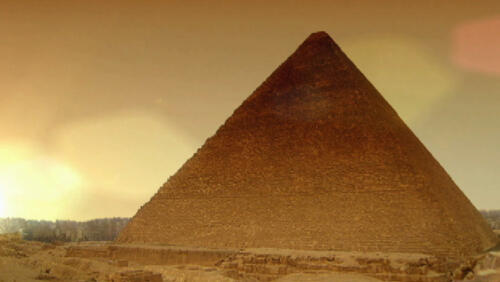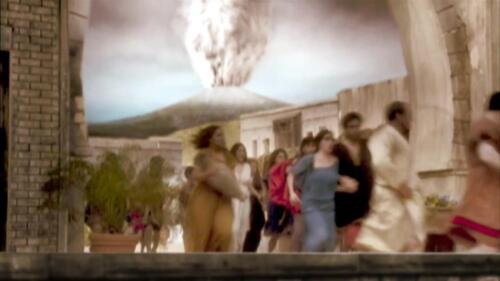Archaeology
Archaeology reveals human history through the excavation and interpretation of remains and objects left behind. From the frozen casts of Pompeii‘s victims, to ancient China’s Terracotta Army, to the treasure-filled tomb of King Tut, archaeological finds offer intriguing clues to how people lived their lives—and how we have evolved over time.

Start Here

A British archaeologist believes ancient Egypt’s Queen Nefertiti may be buried behind a secret door inside of King Tut’s tomb.

These eight objects played a role in the daily lives of people living in the cradle of Western civilization nearly 3,000 years ago.

When a chemist discovered that carbon atoms could be used to date ancient remains, he devised a method that upended archaeology.

On March 29, 1974, Chinese farmers digging a well near Xi’an made one of the most spectacular archaeological discoveries of the 20th century.
10 Treasure Discoveries
10 Biggest Treasure Discoveries
From priceless unknown tombs to sunken treasure worth billions of dollars. Discover these 10 biggest treasure discoveries that left the whole world amazed, in this episode of History Countdown.
3 Shocking Archaeological Discoveries
Explore related articles

Was it meant to mimic sounds of sacred winds or screams?

Africa wasn’t the only stomping ground for our human forebears.

A 3,000-year-old fresco from an accountant's tomb depicts hunting, fishing and outdoor feasting.

New studies combined archaeological data with oral history to figure out why everyone left.

What were the Vikings doing in Italy and Greece?

These ancient landmarks offer insight into the civilizations of North and South America.

Dental remains from an ancient burial site in Thailand reveal evidence of betel nut-chewing.

This 12-sided hollow object dating back to ancient Rome looks like a primitive Rubik’s Cube, but its function—if it had one—remains a mystery.

From mosaics to biblical passages, the ancient Roman world heeded warnings of cantankerous canines.

A 140,000-year-old skull may add new chapters to the story of human evolution.

Hundreds of ancient carved stone balls weighing up to 26 tons were discovered after rainforest was cleared for banana plantations.

Long before paleontology emerged as a science, cultures across the world encountered fossils.

An intriguing discovery on Hatteras Island offers possible evidence.

Sunk by earthquakes or swallowed by rising tides, these five underwater settlements hold artifacts and clues to ancient life.

These human remains pulled from peat wetlands offer insight into often violent human history.

They include art looted by Nazis and antiquities snuck out of dig sites and auctioned. Museums are starting to repatriate the treasures.

Hidden for thousands of years beneath a Turkish hillside, this ancient site may be the key to understanding early religion.

The 2,100-year-old Antikythera Mechanism was pulled from a shipwreck and shocked researchers with its sophisticated capabilities.

These seven artifacts show us that even ancient civilizations couldn’t escape taxes.

These discoveries tie biblical stories to the history of the ancient world.

A 2,500-year-old mummy of a tattooed woman in a silk blouse was found in the remote Altai region of Central Asia. Who was she—and what does she reveal about her ancient people?

The position of her mouth suggests this ancient Egyptian woman may have died in agony, possibly while screaming either in pain or fear.

For high-status Vikings, a ship burial offered an extravagant path to the afterlife.

From detecting lost cities of the Amazon to tracing our history with Neanderthals, these were among 2024's most fascinating discoveries.

Evidence of powerful earthquakes linked to the Vesuvius eruption adds to the story about why so many people perished at Pompeii in 79 A.D.

The seafaring Scandinavian warriors suffered from painful cavities and tooth abscesses. Still, their dental health was in some ways better than ours.

Archaeologists decoded part of the ‘unknown’ writing system from the Kushan Empire using the same technique that helped decipher the Rosetta Stone.

The artifact, picked up by a retiree walking on a beach in Israel, depicts one of the most powerful deities of ancient Egypt.

A dagger crafted from meteorite and the remains of King Tut's stillborn daughters are among the stunning artifacts found in the tomb.

The Middle Ages have yielded a series of amazing archaeological discoveries, from medieval swords to buried castle remains to evidence of zombie fears.

Caral was an architectural marvel—a 1,500-acre complex constructed by the oldest known civilization in the Western Hemisphere.

The controversial shroud that is claimed to have once covered the body of Jesus first appeared in the 1350s and is now available for online viewing.

The huge drawings depicting human forms, birds and snakes may have served as sites for rituals and markers for travelers.

An upgrade of the Boy King's burial chamber took a decade.

Looted items include the Rosetta Stone and Benin bronzes.

The discovery of a 4,500-year-old ramp offers clues about Egyptians' technological knowledge.

“I held it up in the air and I said ‘Daddy, I found a sword!’"

Scientists say wounds found on the heel of a man buried some 2,000 years ago in northern Italy suggest he had been nailed to a wooden cross.

Unlike Hollywood portrayals with outstretched arms and shuffling feet, mummies are persons or animals whose bodies have been dried or otherwise preserved after death.

Check out eight of the world’s most notable time capsules.

Much like at Pompeii, archaeologists uncovering the ancient Greek city of Selinunte have found a once-thriving metropolis frozen in time.

A British archaeologist believes ancient Egypt’s Queen Nefertiti may be buried behind a secret door inside of King Tut’s tomb.

Ongoing excavations at two sites in North Carolina have yielded new clues about what may have happened to the English settlers who vanished from Roanoke Island around 1590.

Early humans made sophisticated stone tools like hand axes 1.8 million years ago, a cache of artifacts from Kenya suggests.

Pompeii and Herculaneum were flourishing resorts on the coast of Italy until Mount Vesuvius erupted in 79 A.D., burying the cities’ ruins under tons of ash and rock.

The Xian Tombs of Qin Dynasty, a burial complex for 3rd century BCE Chinese Emperor Qin Shi Huang, are marked by an army of 8,000 terracotta soldiers.

Built during a time when Egypt was one of the richest and most powerful civilizations in the world, the pyramids—especially the Great Pyramids of Giza—are some of the most magnificent man-made structures in history.










